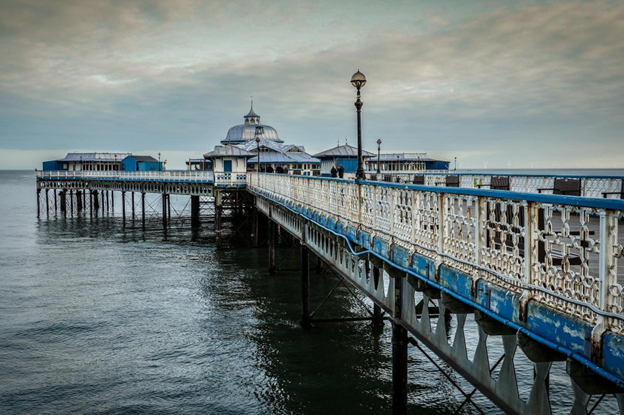Britain’s coastline is dotted with numerous piers, each telling a unique story of cultural and historical significance. These structures, extending into the sea, have served as entertainment hubs, strategic viewpoints, and gateways for maritime adventures. Beyond their apparent beauty and architectural marvel, these piers hold stories untold, echoes of the past that offer a glimpse into the social fabric of their time. For students of history and architecture or those simply intrigued by the allure of bygone eras, exploring these piers offers a tangible connection to Britain’s rich maritime heritage.
In an era where the digital world often overshadows our connection to physical historical contexts, taking a moment to delve into the stories behind these iconic structures can be a refreshing escape. An essay writing platform like essayservice.com provides valuable support for students looking to explore such topics in-depth, offering resources for research and writing on a wide array of subjects. Just as these piers have stood the test of time, so too does the value of deep, investigative learning that platforms like these support.
Brighton Palace Pier: A Victorian Marvel
Brighton Palace Pier, officially opened in 1899, stands as one of the most iconic Victorian piers in the UK. Designed by Richard St. George Moore, it was built to provide a leisure facility away from the hustle and bustle of city life. Over the years, it has featured numerous attractions, including a theatre, concert hall, and amusement rides. Despite facing significant damage during World War II and storms, Brighton Palace Pier has been lovingly restored and continues to be a popular destination for both locals and tourists, offering a glimpse into Victorian leisure culture.
Blackpool Piers: The Trio of Entertainment
Blackpool is home to three piers: North Pier (1863), Central Pier (1868), and South Pier (1893), each with its unique charm and history. The North Pier, the oldest, was a beacon of sophistication, offering facilities such as a theatre and a sun lounge. Central Pier was more family-oriented, featuring attractions like a giant Ferris wheel. South Pier, initially named Victoria Pier, catered to the thrill-seekers with its amusement park. Together, they paint a vivid picture of the evolving nature of seaside entertainment through the ages.
Southend Pier: The World’s Longest Pleasure Pier
Extending 1.34 miles into the Thames Estuary, Southend Pier holds the record for the world’s longest pleasure pier. Opened in 1830, it was initially constructed to allow ships to dock at all tides. The pier has survived fires, boat crashes, and wars, embodying resilience and adaptation. Its railway, operational since 1890, transports visitors back and forth, offering a unique experience that blends history with scenic beauty.
Weston-super-Mare Grand Pier: Rebirth from the Ashes
Originally opened in 1904, the Grand Pier in Weston-super-Mare has experienced both devastation and rejuvenation. After a fire in 2008 destroyed much of its structure, the pier was extensively rebuilt and reopened in 2010. Today, it features modern attractions, including indoor theme park rides, while retaining its historical significance as a beloved landmark of the Somerset coast.
Clevedon Pier: A Grade I Listed Beauty
Clevedon Pier, opened in 1869, is renowned for its architectural elegance and is a Grade I listed building. This accolade is a testament to its design and historical importance, making it one of the finest examples of a Victorian pier in the UK. The pier’s serene atmosphere and picturesque setting have made it a favoured subject for photographers and a peaceful retreat for visitors.
Llandudno Pier: A Welsh Gem
Opened in 1877, Llandudno Pier is the longest in Wales and is celebrated for its Victorian and Edwardian elegance. Its intricate metalwork and wooden decking epitomize the craftsmanship of the era. The pier has served various purposes over the years, including as a docking point for steamers in the early 20th century. Today, it remains a popular attraction, offering entertainment and stunning views of the Irish Sea and the Great Orme.
Conclusion
Britain’s historical piers are not merely remnants of the past. They are vibrant, living entities that continue to charm and fascinate. They tell stories of architectural ingenuity, societal shifts, and the enduring appeal of the seaside. For students looking to explore the depths of Britain’s coastal heritage, these piers offer a wealth of learning opportunities, each with its unique narrative. In pursuing these stories, resources like EssayService dissertation writing service can be invaluable, providing expert guidance and support for deep dives into history, architecture, and cultural studies. These piers, with their rich histories and enduring legacies, invite us to step back in time and imagine the myriad stories that have unfolded along their decks.
Author Bio
Freelance writer Nicole Hardy, a distinguished journalist in the realms of education and the arts, is celebrated for her thorough and discerning coverage of performing arts education. Her career, which extends beyond ten years, has solidified her status as an authoritative figure in this domain. Hardy is praised for her thorough analyses and captivating writing manner. She earned her Master’s in Journalism from the University of Arts, with a focus on arts and culture journalism.











